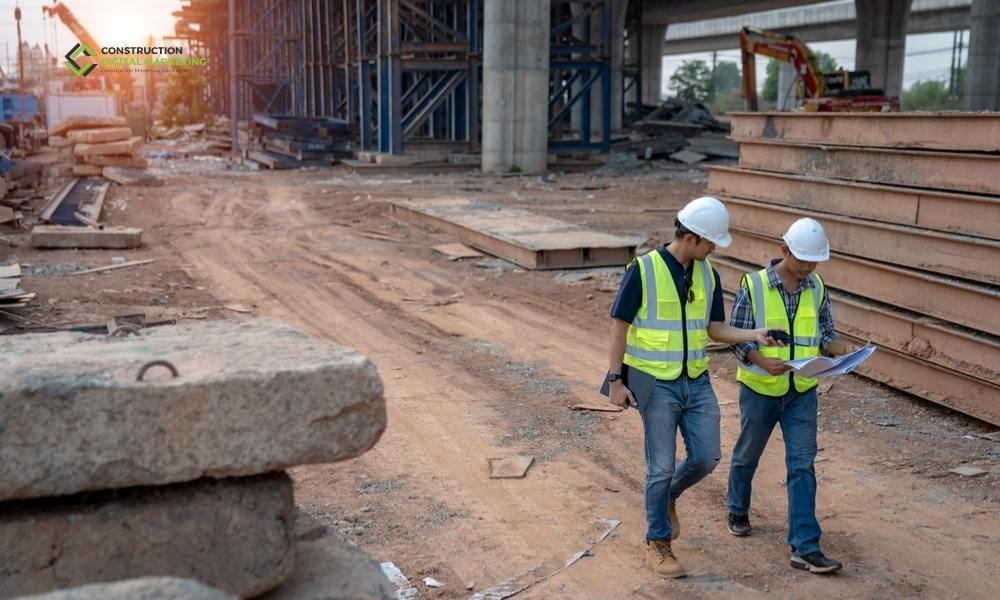In today’s competitive market, having a website is no longer a luxury for construction companies—it’s a necessity. A strong online presence allows potential clients to find your business, learn about your services, and understand why you’re the right choice for their construction projects. Whether you’re a general contractor, subcontractor, or a specialist in a specific field, a professional website is an essential tool that can help your business grow.
If you’re in the construction industry and considering building or redesigning your website, you’re in the right place. In this guide, I will walk you through the basics of website design, covering everything from key principles to the most effective design tools and strategies to help your business succeed online.
What You Will Learn in This Guide:
- Why a Professional Website is Essential for Construction Companies
- Key Web Design Principles for Construction Websites
- Choosing the Right Layout for Your Website
- Understanding the Functional Elements of Web Design
- The Role of Visual Elements in Your Construction Website
- How to Create a User-Friendly Website
- Website Maintenance and Updates
- Design Tools for Construction Websites
Why a Professional Website is Essential for Construction Companies
A professional website acts as your online storefront and is often the first point of contact for potential clients. In the construction industry, where trust and reliability are key, a well-designed website can significantly impact how clients perceive your business. Here’s why having a professional website is essential:
- Increased Visibility: With a website, your construction company becomes visible to anyone searching for services in your area, 24/7.
- Credibility and Trust: A polished, professional website helps build trust with potential clients. It allows you to showcase your portfolio, client testimonials, and any certifications or industry memberships, reinforcing your credibility.
- Lead Generation: Your website can act as a tool for generating leads. By including call-to-action buttons, contact forms, and a clear description of your services, clients can easily reach out for quotes or consultations.
Key Web Design Principles for Construction Websites
Creating a functional and visually appealing construction website starts with understanding key web design principles. These principles help create a balanced, user-friendly site that encourages potential clients to stay longer and take action.
- Balance
Ensure that no element on your page is too overpowering. Symmetrical balance (even distribution of elements) or asymmetrical balance (deliberate uneven distribution) can help make your site look professional and dynamic. - Contrast
Use contrast to draw attention to key elements on your website, such as call-to-action buttons or important service offerings. For example, contrasting dark and light colors or large and small fonts will make certain elements stand out. - Hierarchy
Prioritize the most important content on your website. Make sure your business name, services, and contact details are easy to find. The principle of hierarchy ensures that visitors don’t have to hunt for critical information. - Whitespace
While it might seem counterintuitive, leaving some blank space on your website is essential for clarity. It helps prevent overcrowding and allows each element to stand out on its own. - Unity
All elements on your site, from fonts to images, should work together to create a cohesive look. This ensures that your website appears professional and well-planned, making it easier for visitors to engage.
Choosing the Right Layout for Your Website
The layout of your construction website is crucial to its success. It will affect the way visitors navigate your site and find the information they need. The right layout will not only make your website visually appealing but will also enhance user experience. Here are a few layout options for construction websites:
- Grid Layout:
A grid layout offers a clean, organized way to display content, making it ideal for showcasing your portfolio, services, or client testimonials. - Single-Page Layout:
A single-page design is best if you want to present information concisely. This layout works well for smaller businesses or those with fewer services, as it allows clients to scroll through all key information in one place. - Modular Layout:
This layout allows for sections to be added or removed as needed. It’s flexible and can accommodate various types of content, making it a good choice for growing construction businesses with expanding service offerings.

Understanding the Functional Elements of Web Design
Web design is about more than just how your site looks—it’s about how it functions. Here are some key elements to consider when designing your construction website:
- Navigation:
Ensure that your website’s navigation is intuitive and easy to follow. A well-organized navigation menu helps visitors quickly find the information they need, such as services, project portfolios, and contact information. - SEO (Search Engine Optimization):
Optimize your site for search engines to increase visibility. This includes using the right keywords, optimizing images, and having clear, descriptive titles and headings. - Mobile Optimization:
With more clients searching for services on their mobile devices, it’s essential that your construction website is responsive and mobile-friendly. - Speed:
A slow website can turn potential clients away. Ensure that your site loads quickly by compressing images and using efficient coding practices.
The Role of Visual Elements in Your Construction Website
Visual elements are key to engaging visitors and leaving a lasting impression. Here’s how to effectively use visuals on your construction website:
- High-Quality Images:
Display high-resolution images of your completed projects. This helps potential clients visualize the quality of your work and adds authenticity to your services. - Typography:
Choose readable, professional fonts that align with your brand. Avoid overly decorative fonts that might make your site hard to navigate. - Color Scheme:
Select a color scheme that aligns with your company’s branding. Use colors strategically to guide the visitor’s attention to key areas of your site, such as the contact form or quote request section. - Video Content:
Adding videos of your projects or client testimonials can boost engagement and provide a more personal touch to your website.
How to Create a User-Friendly Website
User experience (UX) is essential for keeping visitors engaged and encouraging them to take action. Here are some UX best practices for your construction website:
- Clear Call-to-Action:
Every page on your website should have a clear call-to-action (CTA), whether it’s to request a quote, contact you, or view your portfolio. - Easy-to-Find Contact Information:
Make it simple for visitors to get in touch with you. Your phone number, email, and contact form should be prominently displayed on every page. - Fast Loading Times:
Visitors will leave if your site takes too long to load. Keep your website’s performance high by compressing images and using clean code.
Website Maintenance and Updates
Once your construction website is live, maintaining it is crucial. Here’s why:
- Up-to-Date Content:
Regularly update your website with new project photos, blog posts, and relevant content. This keeps your website fresh and engaging for returning visitors. - Check for Bugs:
Test your website periodically to ensure that all forms, links, and interactive elements are functioning correctly. - Improve Performance:
As you gather data on your site’s performance, make adjustments to improve loading speed, navigation, and overall user experience.
Design Tools for Construction Websites
There are numerous tools available to help you design and develop your construction website. Here are some popular choices:
- Wix: A user-friendly platform with templates tailored to various industries, including construction.
- WordPress: Ideal for those looking for more customization and scalability, WordPress offers numerous themes and plugins designed for construction businesses.
- Figma & Sketch: Design tools for professionals who want to create custom layouts and visual elements before turning them into code.
Get a Free Demo of Our Web Design Service
Building a website for your construction business can be an exciting step towards growth and success. If you’re ready to take your business online or revamp your existing site, reach out to us for a free demo of our web design services. We’ll help you create a website that captures your brand’s essence and converts visitors into clients. Don’t wait—get started today!


